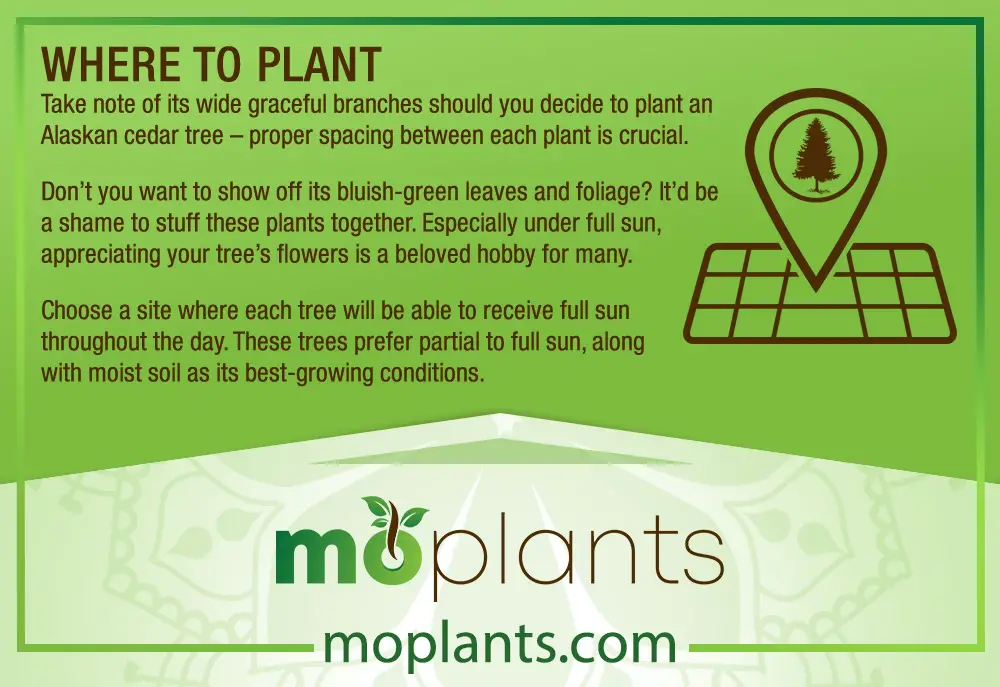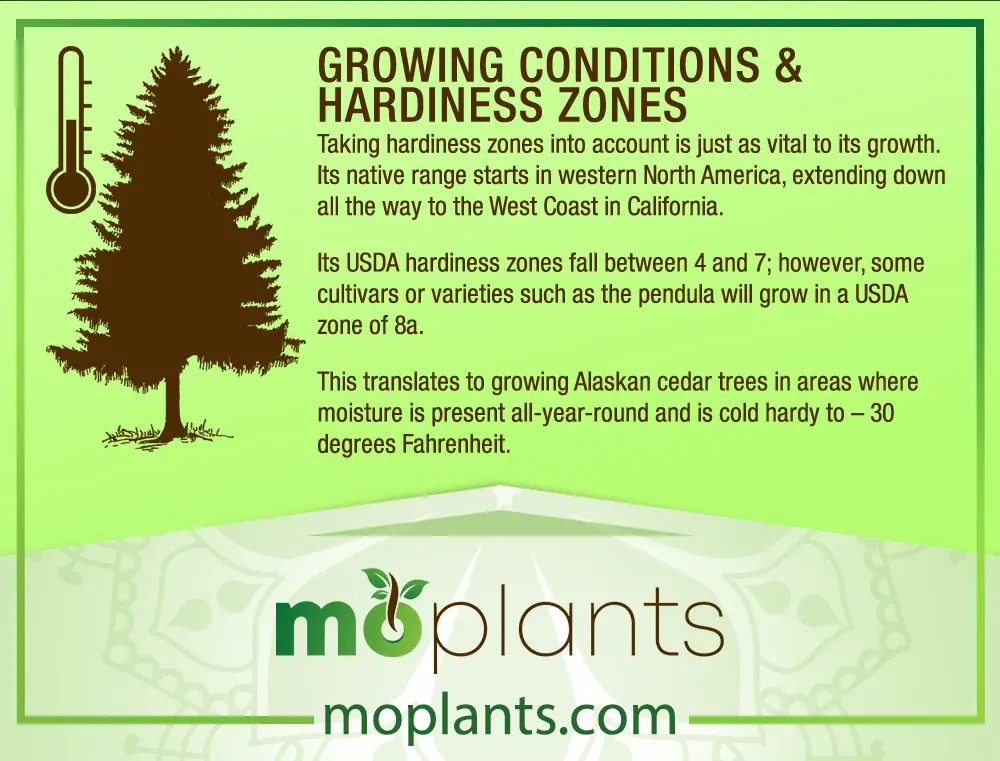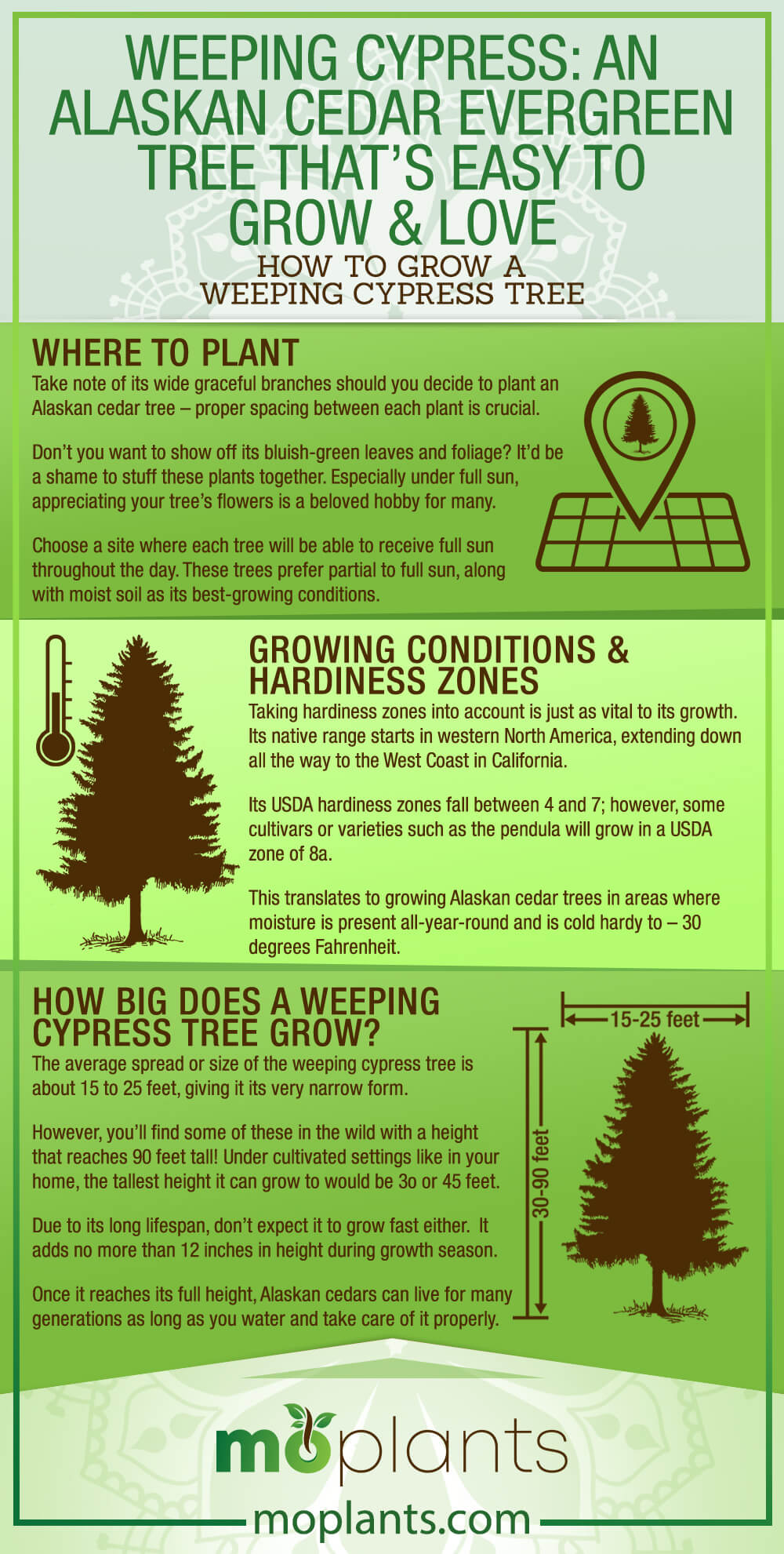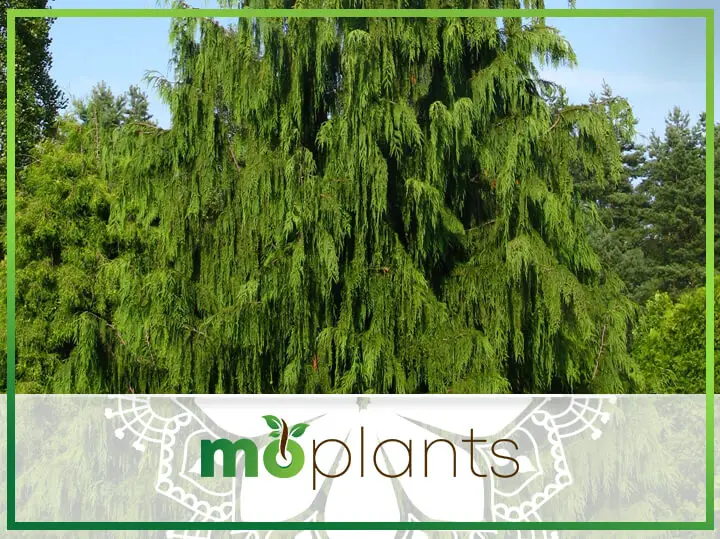Looking for advice on what to plant for your next evergreen tree?
How about a Weeping Cypress? Its “weeping nature” might not exactly be the sunshine tree you were looking for, but it’s at best a charming one you can grow to love.
It’s even easy to grow one! Curious to learn more?
We’ll dive into the details about its benefits, risks, growing conditions, and how to properly care for it.
What’s to Love About the Weeping Nootka Cypress? (Chamaecyparis nootkatensis)
The Weeping Cypress or its genus name chamaecyparis nootkatensis can live up to a thousand years!
The Alaskan weeping cypress goes by its other names, such as Nootka cypress, Alaska cedar, yellow cypress, and Nootka false cypress.
Since a weeping cypress is more closely related to a cypress than cedars, its genus name has also changed from chamaecyparis nootkatensis to xanthocyparis nootkatensis.
What we love most is its soft and wispy flat-needled boughs with its bluish-green foliage so you won’t have to worry about thorny needles.
Due to its pyramidal shape and weeping nature, the Alaskan cedar is an ideal landscape plant to have in your garden or front yard, even with minimal or limited space!
Not to mention, the bluish-green evergreen leaves and flowers are a wonderful touch to the landscape.
Risks to Take Note Of
We wouldn’t say the Alaskan cedar comes with a serious risk. After all, it’s mostly pest-resistant!
However, through experience and on occasion, you’ll find bagworms clinging to its branches. Our main concern was the spruce mites, as they become problematic to deal with at some point.
This can easily be resolved by adding a good number of flowering plants or using certain sprays in your garden or area.
Another risk worth noting is planting it near roads. While it’s fairly resistant to road-side pollution, it’s best to keep it away from driveways, sidewalks, or roads in general.
During winter, road salt might harm your Alaskan cypress, and we wouldn’t want all that tender loving care you put into growing this tree to go to waste, right?
You can use a plant or pet-safe ice melter to protect your tree fully from any damage.
Given the risks of planting an Alaskan cedar, the benefits far outweigh the cons.
Varieties of the Weeping Alaskan Cedar Tree
- Chamaecyparis nootkatensis pendula – This Alaskan cedar species is the most common you’ll find in the U.S. that grows up to 35 feet tall and 12 feet wide. Some varieties will have its branches touching the ground, adding elegance to its aesthetic appeal.
- Chamaecyparis nootkatensis ‘green arrow’ – If you prefer a smaller tree that would easily fit a small garden area or yard, the green arrow variety is a perfect choice. Growing as tall as 20 feet and 2 feet wide, its distinctive quality is its very narrow spire. This narrow form creates a strong vertical accent for your garden and landscape.
With its thousand-year lifespan and elegant form, it’s no wonder why people have come to love this tree.
How to Grow a Weeping Cypress Tree
Where to Plant
Take note of its wide graceful branches should you decide to plant an Alaskan cedar tree – proper spacing between each plant is crucial.
Don’t you want to show off its bluish-green leaves and foliage? It’d be a shame to stuff these plants together. Especially under full sun, appreciating your tree’s flowers is a beloved hobby for many.
Choose a site where each tree will be able to receive full sun throughout the day. These trees prefer partial to full sun, along with moist soil as its best-growing conditions.
Moist soil is key here, as you don’t want your soil to be waterlogged. Standing water is the worst condition you can plant it in.
If you have a low-lying area or landscape, this would be perfect for its growth.
Now here comes the tricky part.
Alaskan cedars are cold hardy; however, strong winds are its weakness. If you choose a site with cold & harsh winter winds, protect it beforehand since the winds can cause branch or needle desiccation.

Growing Conditions & Hardiness Zones
Taking hardiness zones into account is just as vital to its growth. Its native range starts in western North America, extending down all the way to the West Coast in California.
Its USDA hardiness zones fall between 4 and 7; however, some cultivars or varieties such as the pendula will grow in a USDA zone of 8a.
This translates to growing Alaskan cedar trees in areas where moisture is present all-year-round and is cold hardy to – 30 degrees Fahrenheit.
The best places Alaskan cedar trees will thrive are the northern tier of the U.S. and the majority of Canada.
If the summer season is too hot and the soil is too dry, these will only hurt your tree since Alaskan cedars don’t respond well to intense heat and extremely dry soil.

How Big Does a Weeping Cypress Tree Grow?
The average spread or size of the weeping cypress tree is about 15 to 25 feet, giving it its very narrow form.
However, you’ll find some of these in the wild with a height that reaches 90 feet tall! Under cultivated settings like in your home, the tallest height it can grow to would be 3o or 45 feet.
Due to its long lifespan, don’t expect it to grow fast either. It adds no more than 12 inches in height during growth season.
Once it reaches its full height, Alaskan cedars can live for many generations as long as you water and take care of it properly.

Infographic

How to Properly Care for a Weeping Cedar Tree
Something to note: a weeping cypress tree requires minimal maintenance.
Nevertheless, bear these tips to grow it at full height and reach its optimal size.
- Weeping cypresses respond well to a good selection range of fertilizers either liquid or stake. For liquid fertilizers, apply it 3 to 4 times per year, starting in late-April and ending in mid-July. For stake fertilizers, follow the directions stated in the package.
- During its new growth, a higher nitrogen mix is best. Similarly, a 20-20-20 mix is a good option too. However, as these trees mature, it will also require less fertilizer and nitrogen. Organic fertilizers such as manure are great options too.
- Use a burlap tent to protect it from harsh winds.
- In moist soils with good drainage, you don’t need to add supplemental water except in extreme drought conditions.
- When mulching, a 2 to 3-inch layer of shredded hardwood will help maintain the soil moisture and limit weed competition.
Should You Trim a Weeping Cedar Tree?
An Alaskan cedar tree will require little pruning throughout its life. Some might argue that pruning will only ruin the form of your tree, especially with a poor trimming technique.
It’s best not to prune Alaskan cedars to give it all the space it needs along with allowing it to grow and reach its full height right from the start.
Final Words
Given its low maintenance, Alaskan cedars are still vulnerable to a range of factors.
However, if you properly maintain and take care of it down to its roots and boughs, it will shine for you even on a rainy day.
In case the central leader is damaged or lost, you can establish a new one by tying a side shoot in an upright position for about 18 months.
We hope you enjoyed reading this article! For questions, don’t hesitate to ask us below!

